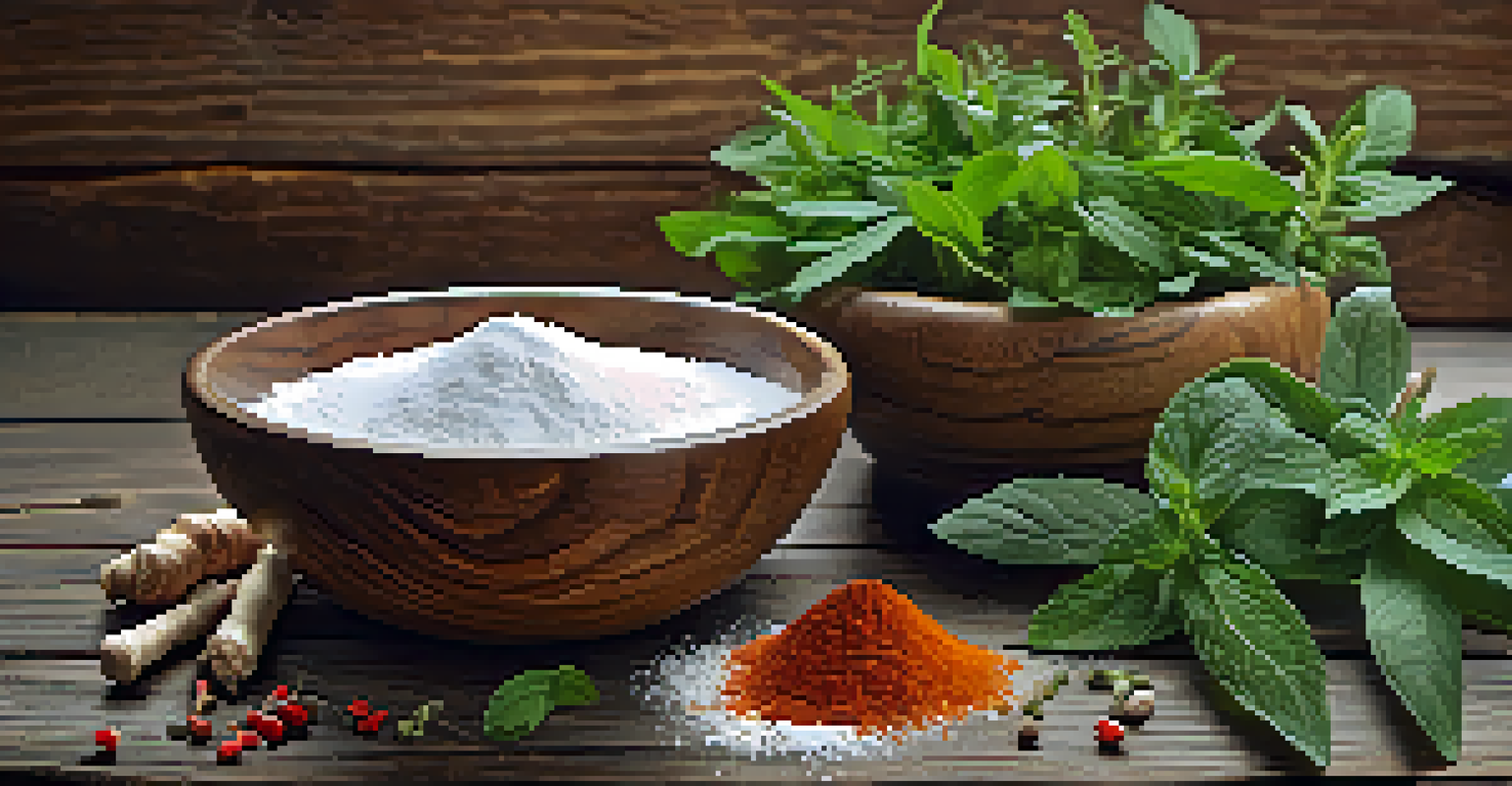Herbal Remedies for Managing Chronic Pain Naturally

Understanding Chronic Pain and Its Challenges
Chronic pain affects millions of people worldwide, often lingering for months or even years. It can stem from various conditions, including arthritis, fibromyalgia, or past injuries. Unlike acute pain, which serves as a warning, chronic pain often persists without a clear reason, making it frustrating and debilitating.
Herbs are the friend of the physician and the pride of the chemist.
Living with chronic pain can impact not only physical health but also emotional well-being. Many individuals experience anxiety, depression, or even isolation due to their pain. This multifaceted nature of chronic pain highlights the need for comprehensive management strategies.
While conventional treatments like medication and physical therapy are common, many are turning to herbal remedies for a more natural approach. Exploring these remedies can provide additional relief and improve overall quality of life.
The Role of Herbal Remedies in Pain Management
Herbal remedies have been used for centuries across various cultures to alleviate pain and promote healing. They often come from plants, which contain compounds that can interact with the body in beneficial ways. By tapping into these natural substances, many individuals seek to manage their chronic pain without relying solely on pharmaceuticals.

One of the main advantages of herbal remedies is their potential to minimize side effects. Unlike some conventional pain medications that may cause issues like gastrointestinal problems or addiction, many herbs offer a gentler alternative. This makes them particularly appealing for those who are sensitive to medications or seek a holistic approach.
Chronic Pain's Emotional Toll
Chronic pain not only affects physical health but also significantly impacts emotional well-being, often leading to anxiety and depression.
However, it's essential to remember that not all herbal remedies are created equal. Quality, dosage, and individual response can vary significantly, so it's important to do thorough research and consult with healthcare providers before starting any new regimen.
Turmeric: The Golden Spice for Pain Relief
Turmeric, often hailed as 'the golden spice', contains curcumin, a compound known for its anti-inflammatory properties. This makes turmeric particularly effective for conditions like arthritis, where inflammation plays a significant role in pain. Many people incorporate turmeric into their diets through curries, teas, or supplements.
Natural forces within us are the healers of disease.
Research has shown that curcumin may help reduce pain and improve function in those suffering from osteoarthritis. Additionally, it may provide relief for other inflammatory conditions, offering a natural alternative to traditional anti-inflammatory medications. Regular use could lead to noticeable improvements over time.
To reap the benefits of turmeric, consider adding black pepper to your intake as it enhances curcumin absorption. This simple combination can elevate your pain management efforts while adding a flavorful twist to your meals.
Ginger: A Zesty Ally Against Pain
Ginger is another powerful herb with a long history of use for pain relief. Its active compounds, gingerols and shogaols, possess strong anti-inflammatory and antioxidant properties. This makes ginger particularly useful for reducing pain associated with conditions like osteoarthritis and muscle soreness.
Incorporating ginger into your daily routine can be as simple as brewing ginger tea, adding it to smoothies, or using it in cooking. Many find that even a small amount can help alleviate discomfort and provide a warming effect that soothes aches.
Herbal Remedies for Pain Relief
Herbal remedies like turmeric, ginger, and willow bark offer natural alternatives for managing chronic pain with potentially fewer side effects.
It's also worth noting that ginger is generally safe for most people but can interact with certain medications. As with any herbal remedy, it's wise to consult with a healthcare provider, especially if you're currently on medication or have underlying health conditions.
Willow Bark: Nature's Aspirin
Willow bark has earned the nickname 'nature's aspirin' due to its salicin content, which the body can convert into salicylic acid. This compound has pain-relieving properties similar to those found in traditional aspirin, making willow bark a popular choice for managing pain, especially back pain and headaches.
Users often find relief from conditions like arthritis and menstrual cramps as well. Many herbalists recommend willow bark for its effectiveness in reducing inflammation and discomfort without the harsh side effects associated with over-the-counter pain relievers.
However, as with any remedy, it's critical to use willow bark responsibly. Individuals who are allergic to aspirin or taking blood-thinning medications should exercise caution and seek professional advice before using this herb.
Capsaicin: A Spicy Solution for Pain
Capsaicin, the active component in chili peppers, is gaining recognition for its pain-relieving properties. When applied topically, capsaicin can help reduce pain signals sent to the brain, making it a popular choice for conditions like neuropathy and joint pain. Many topical creams incorporate capsaicin to offer targeted relief.
The heat sensation from capsaicin can initially feel intense, but many users report a decrease in pain after repeated application. This makes it a unique option for those looking to manage chronic pain without ingesting oral medications.
Consult Healthcare for Safety
It's essential to consult with healthcare providers before starting herbal remedies to ensure they are safe and effective for individual health needs.
It's essential to apply capsaicin carefully, as it can cause irritation if applied to sensitive skin or open wounds. Always wash your hands thoroughly after applying and avoid contact with your eyes.
Peppermint: Cooling Comfort for Pain Relief
Peppermint is more than just a refreshing flavor; it also holds pain-relieving properties. The menthol in peppermint oil provides a cooling sensation that can help soothe muscle pain and tension. Many people use peppermint oil in massages or as a topical treatment for headaches and migraines.
In addition to its topical benefits, peppermint tea can be a comforting remedy for digestive pain, helping to relieve bloating and discomfort. This dual benefit makes peppermint a versatile addition to your herbal toolkit.

As with other herbal remedies, it's essential to be mindful of any potential allergies or sensitivities to peppermint. A patch test can help determine how your skin reacts to topical peppermint before widespread use.
Consulting with Healthcare Providers for Safe Use
While herbal remedies can offer significant benefits, it's crucial to approach them with caution. Not all herbs are suitable for everyone, and some may interact with medications or exacerbate existing conditions. Consulting with a healthcare provider ensures that your chosen remedies align with your overall health plan.
A healthcare professional can help you navigate the world of herbal remedies, guiding you toward safe options and effective dosages. They can also monitor your progress, making adjustments as needed to ensure optimal results.
By working together with your healthcare provider, you can create a well-rounded approach to managing chronic pain that incorporates both herbal remedies and traditional treatments, ultimately enhancing your quality of life.